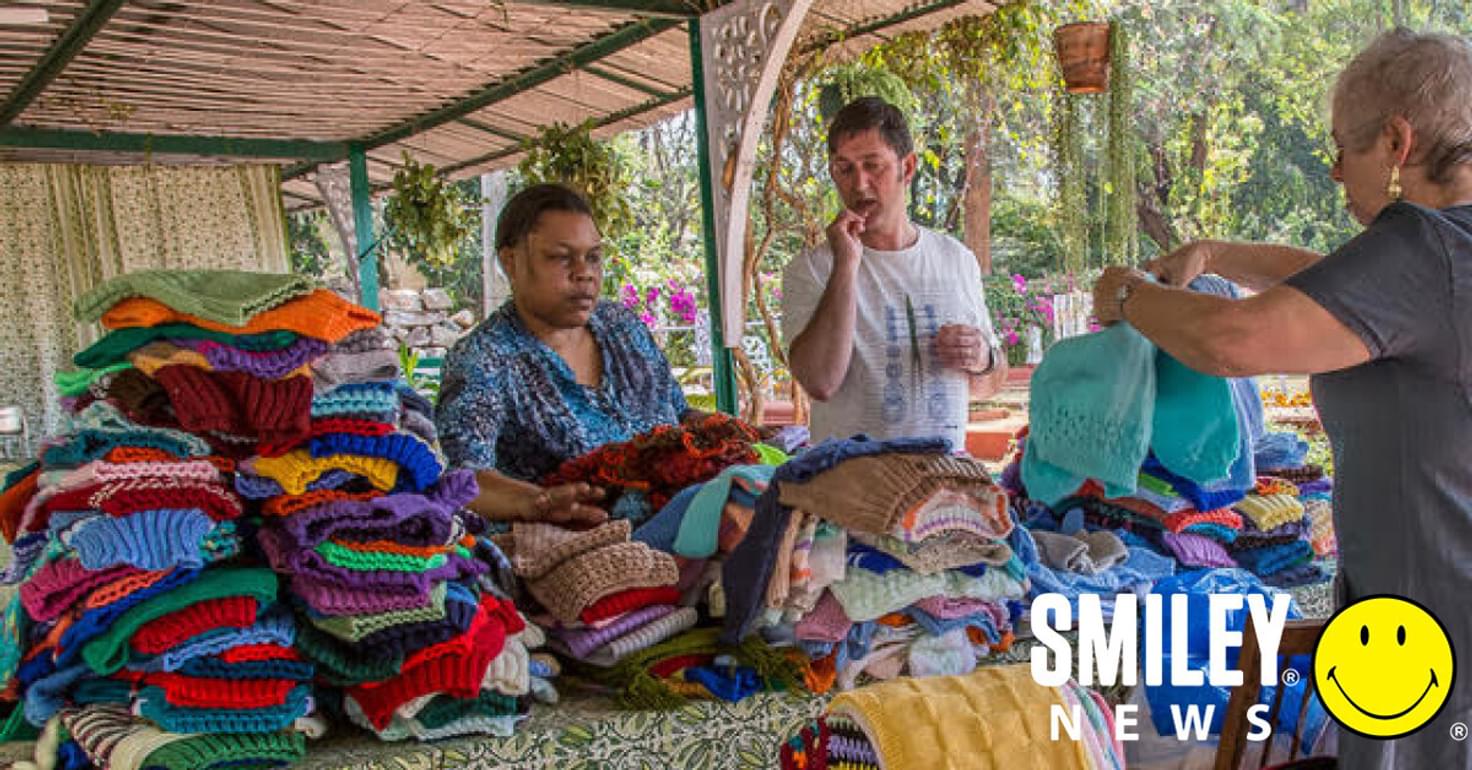
Words by Smiley Team
When you think of knitting, what do you picture? An elderly person knitting at home on their chair, perhaps? It’s a stereotype many people have – but actually, knitting can be an incredibly powerful tool.
Dame Hilary Blume is the director of the Charities Advisory Trust – and, as part of that, she developed Knit for Peace UK, an initiative that helps communities all over the world benefit from the hobby.
So, how did it all start? 20 years ago, Hilary started the ‘Good Gift Catalogue’ as a refreshing alternative to unwanted presents. The gifts provided practical help directly to those in need, helping them take the first step out of poverty – such as feeding abandoned animals, or giving toys to children in a refugee camp.
Soon after it launched, Hilary went to Rwanda to see a project they’d been sending money to. “There were terrible genocides there,” she says, “and displaced women, where their husbands and children had been killed. There were really horrendous conditions for them. There were many surviving widows, who couldn’t go back to their homes.”
[Read More: 5 benefits to living 'off grid']
Hilary noticed these women could knit and crochet, and suggested they knitted school jumpers, for the child orphans – “it’s cold there and rains a lot,” she says, “and the orphans couldn’t afford a jumper.” Hilary said she’d put the gift of supporting a widow to knit jumpers for children in the Good Gift Catalogue. “It was very successful,” she says, “and it’s still going now.”
The knitting initiative grew, as Hilary told communities they worked with in India about the project. They organised groups in Delhi slums to give women yarn – they had no income, but they could knit! “People started to knit and give away their creations as a peace gesture to children,” says Hilary. “People from Afghanistan asked to join in, too.”
And so it got bigger. Through the charity, Hilary would give women the material to knit. This would not only make them feel good (as knitting has been proven to have health benefits), but also enable them to donate their knitting as gestures of peace to each other’s children.
The word spread, and Hilary was contacted by a woman in Canada who wanted to join the initiative, too. “So we said, ‘okay send the knitting to us and we’ll organise to send it to people in need.’” That’s very much how Knit for Peace works today. “Once we said we would distribute donated knitting we found we were inundated,” says Hilary. “The operation has grown organically, and we estimate we have over 40,000 knitters.
[Read More: Woman discusses grief with touring ice cream van]
“If you want to knit for people in need, we find a home for it! We’ve built up a big network of places we distribute to. We ship to refugee camps in Turkey, as well as refugees in Calais, too. We also distribute knitting like blankets to care homes and hospices in the UK, as well as refugee drop-in centres.”
Now, when Hilary visits India, they like to keep Knit for Peace alive and will take lots of knitted items. More and more communities are taking up the idea of knitting, too. Hilary says they send yarn to prisons, so people can knit, and to any community group in need.
“Knitting is good for everybody,” says Hilary. “It’s a wonderful way to help people, but it also relaxes the person knitting, too. It works both ways. The health benefits are enormous, as it can reduce anxiety, lower blood pressure, and make you feel like you’re achieving something.”
Want to get involved? If you’re interested, Hilary says contact Knit for Peace on their website and ask what they’re in need of being knitted. “Send your knitting to us and we will make sure it goes to a good home.”